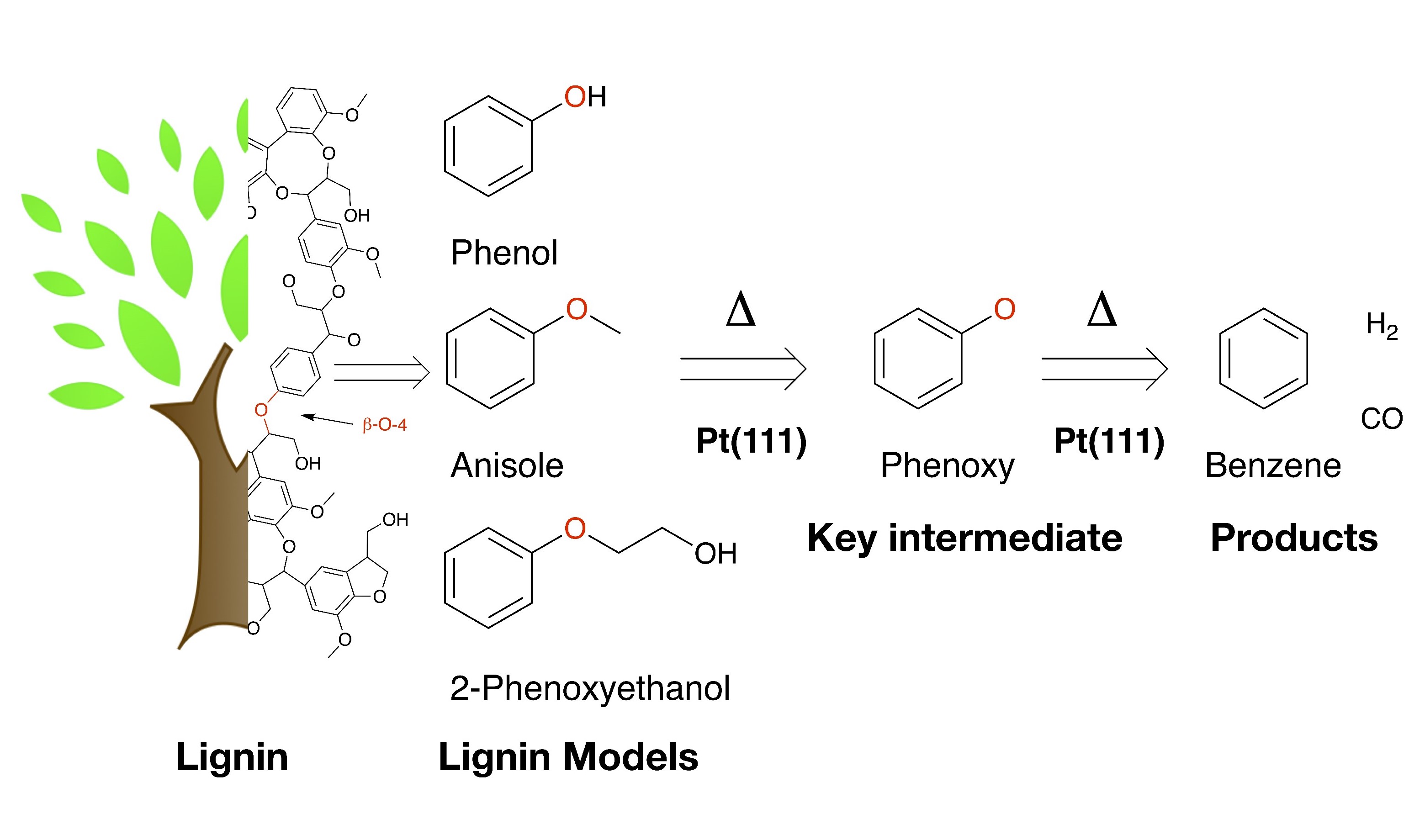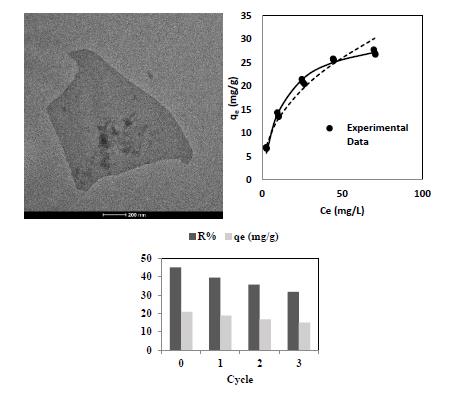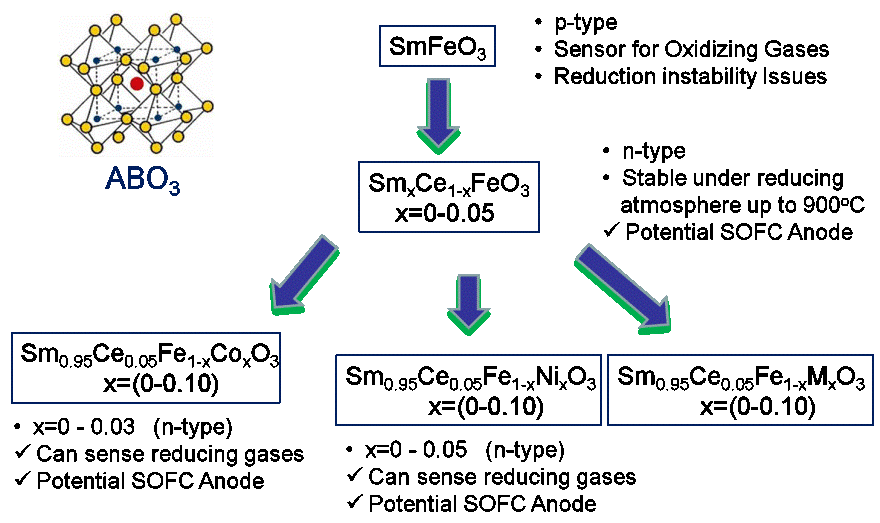Research
Current and Recent projects
Lignin reactivity by surface science
Biomass conversion is to be an ideal candidate to be used in chemical production since it is inexpensive, renewable, and readily available, and thus the conversion of biomass into high value products is an important target both economically and socially. Lignin (an abundant, cheap and underutilized substance in plants) is a renewable source of aromatics. We study the mechanisms of catalytic degradation of lignin model molecules in order to yield high value compounds. Using UHV experiments and modeling, we showed that “phenoxy” stands as a key intermediate in the decomposition of lignin models, and revealed the role of reductants (hydrogen and carbonaceous species), ultimately leading to benzene or phenol products. This study opens the door to the rational design of supported metals catalysts to valorize lignin-derived aromatics.

Ammonia removal from aqueous media
Municipal, industrial and agricultural wastewaters contain high concentrations of nitrogen in the form of ammonia and ammonium ions. Sodium functionalized graphene oxide (GO-Na) is used for Total Ammonia Nitrogen removal from aqueous media by ion exchange, showing high adsorption capacity and favorable thermodynamic parameters.

Perovskites
We developed perovskite (nano) materials, fine tuning their physical and chemical properties (conductivity, crystal structure, oxidation states, surface species, segregation and phase formation, nano-domain properties, etc). Some of these materials were used to develop high temperature sensors, and sulfur resistant solid-oxide-fuel-cell anodes. For example, we demonstrated that we could tune the semiconducting properties, the chemical stability, and the reactivity of the SmFeO3 family by using an electron rich dopant at the A site (Ce) and active transition metals at the B site.
